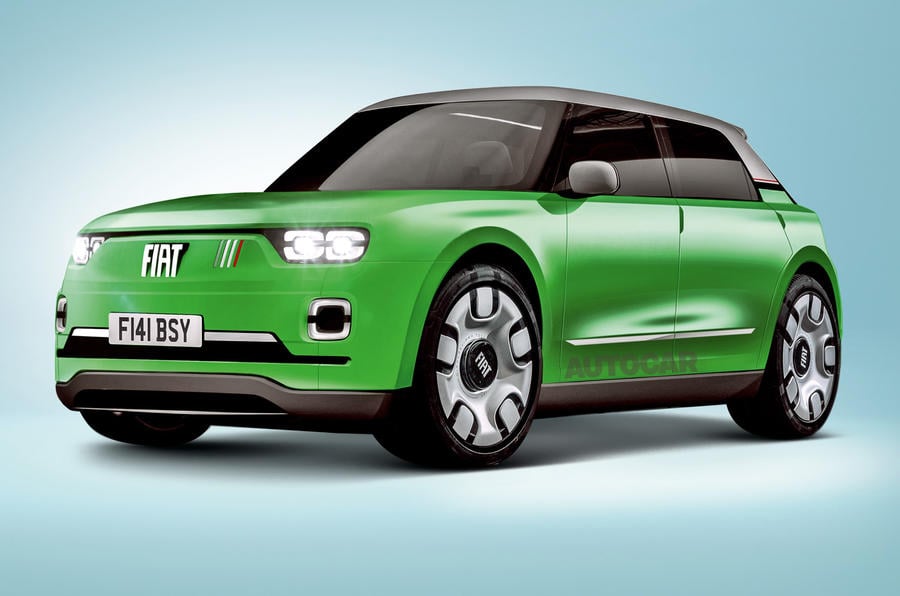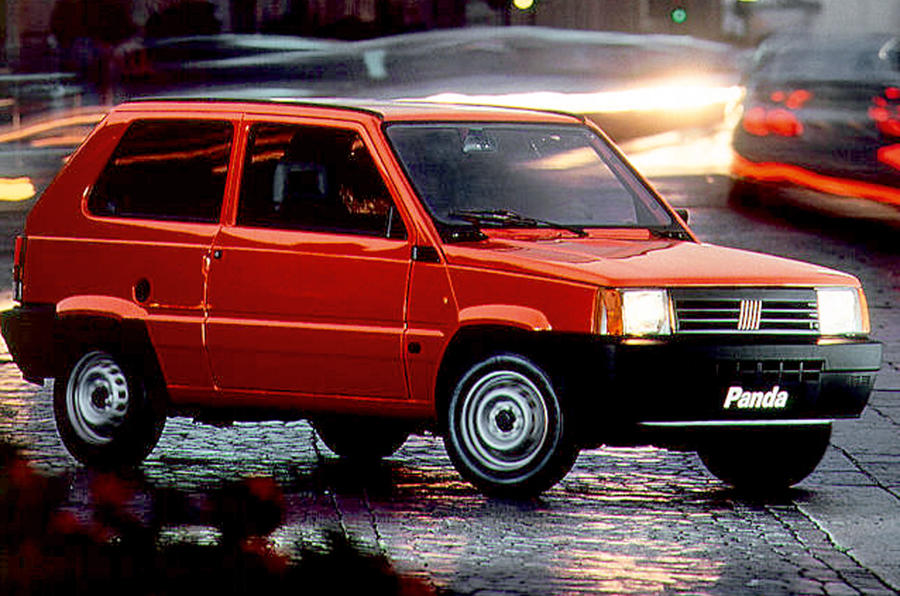Fiat will introduce a comprehensively overhauled line-up, including a “rugged, simple, robust” retro-style version of the Panda.
Fiat will begin its biggest resurgence in more than a decade with a new hatchback in 2023, followed by three new crossovers in three years.
Ultimately, the Italian brand will have a line-up of 10 core models, including four light commercial vehicles, the South America-only Strada supermini and five global cars. These will include the iconic and strong-selling Fiat 500, plus next year’s B-segment car and the three crossovers.
The new-product assault comes after a decade of little investment from former owner Fiat Chrysler Automobiles (FCA). Under new parent company Stellantis, Fiat now has the money needed to build a more comprehensive brand line-up.
The designs of the four new models have already been signed off, brand boss Olivier François has confirmed, and at least two of the cars will be heavily influenced by the Centoventi concept of 2019.
Fiat’s current car line-up in Australia comprises the 500, Ducato, and 595 Abarth.
François said: “Now we enter a new world. Finally, we’re able to deliver on our dreams. In the next five years, we’re going to launch one new car per year per region – and globally we’re able to create cars that are common everywhere in the world, which is something we’ve struggled with in the past.
“There will be a big return in the B-segment and crossovers. We’re going back to the most relevant segments. We only have the 500X now. My objective is to have three.”
There are no plans for Fiat to expand beyond compact cars, all of which will measure between 3.6m (500 size) and 4.5m (Volkswagen Tiguan size) in length, said François: “Our cousin [in Stellantis] is Citroën.
The stories are different, but we’re two people brands and share a lot. I think what’s interesting is that we can divide the market in terms of size. We can be the specialist in smaller cars and then Citroën has more legitimacy to cover the D-segment – and, of course, there will be some overlap in the middle.”
New Fiat Panda and 500
The two best-known Fiat model names, 500 and Panda, will continue in the new line-up, François confirmed.He said: “We have two icons. The 500 is one and it’s doing amazingly. In January, it was the most sold electric car in Germany. In the 500 world, models come in different sizes: 500 and 500X. There’s room for something more. It’s chic and urban.
“The other is Panda. The original of the 1980s is quite iconic. There’s something in the air for modern interpretations of cars like that. Not just the shape but [also] the essential, minimalist approach. Less is more. This is what inspired the Centoventi concept and at least a couple of cars you will see.
“You will see smaller cars and bigger crossovers and you will recognise the Panda DNA [in some]. One will be called Panda. The Panda wasn’t iconic because of its shape but because of the philosophy and spirit, and that’s what we’re trying to capture with a little reminiscent design, too. The Panda has to be a little rugged, simple, robust.”
He confirmed that all the new designs are complete and each “has a very strong personality and distinctive design”.
Fiat’s hatch rival in 2023
The first new Fiat, a rival to the Peugeot 208 and Ford Fiesta, is “Punto size but not called Punto”, said François, referencing the popular Fiat supermini that was withdrawn from sale in 2018 after 25 years and three generations.

There are likely to be hybrid and fully electric variants of the new hatchback as Fiat tentatively steps towards going fully electric by 2027 at the latest, said François.
“We’re decisively betting on electric for Europe,” he said. “We’ll ramp up with electric versions on every new car and at some point make a switch.
“Fiat should be the people’s Tesla: electric for all. Clearly, we need the cost of electrification to go down. By 2027, we will be ready, but possibly before. It will depend on cost. I want us to be the first mass-market brand to be electric-only.”
Fiat’s current line-up uses FCA legacy platforms, which will be phased out in favour of Stellantis-wide architectures that promise economies of scale across the group.
The first new Fiat models are likely to use the current CMP platform, as found on the 208 and Opel/Vauxhall Corsa, because Stellantis won’t start using its new STLA platform for smaller cars until at least 2026.
However, the electric 500’s bespoke platform may prove fruitful in the group. Since it already exists, it could pave the way to make city cars viable once again across many of the Stellantis brands, which have struggled to justify the costs of both existing ICE city cars in recent years and developing even more expensive electric versions for the future.
The new car could use the electric 500’s powertrain, which has a 87kW motor and a 42kWh battery to deliver a 320km range. However, it is more likely to echo the set-up of Stellantis’s existing electric superminis, the e-208 and Corsa-e, which use a 101kW motor and a 50kWh battery for around 340km of range.
Rachel Burgess




